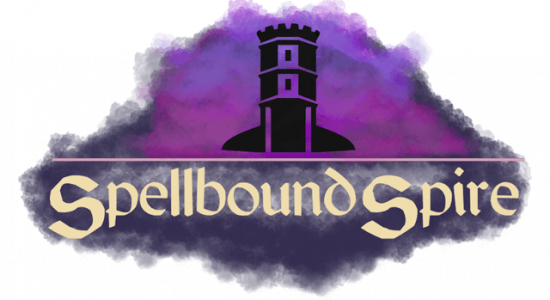
Prototyping Magical Abilities
In the concept phase of what would later become ‘Spellbound Spire’ there were many different ideas of what the game should be. One of the more popular ones was using multiple magical hands to solve puzzles.
I created this proof of concept level in Unreal Engine 4 with blueprints to test the potential of this idea.
One of the VR mechanics I conceptualized is the Familiar Hand that lets the player summon a winged creature on the back of his hand to launch away.
When flying it is steered by the player’s hand motions giving the player an empowering feeling and providing a unique challenge utilizing motion controls.
It explodes upon impact so it can be used to break obstructions, move an object that is out of reach or simply as a weapon similar to a missle.
On the off-hand a magical projection is displayed showing the creature’s POV. The POV display can be used to fly the creature beyond the player’s vision (e.g through vents).
This also allows the player to scan the environment from a different perspective and search for hidden clues!
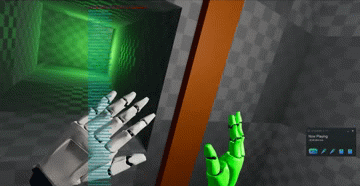
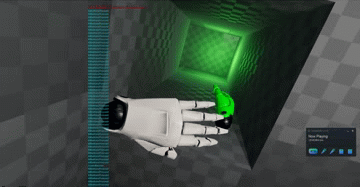
Researching VR movement methods and motion sickness
I have researched and tested different navigational methods for VR as well as solutions for motion sickness.
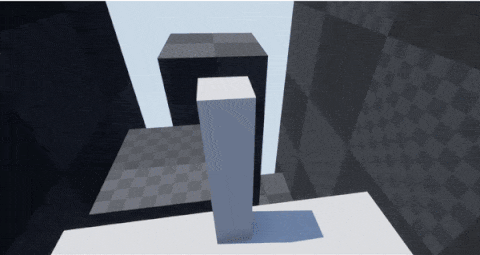
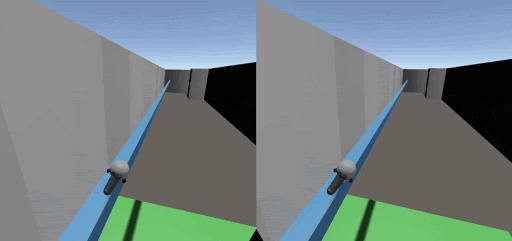
I prototyped a moving platform that moves the play space in 4 directions depending on what pillar the player touches. I minimized motion sickness the following ways:
- The player can anticipate the movements before they happen because the player is the one in control.
- The platform moves at a fixed low speed and doesn’t accelerate.
- The pillars on the platform don’t only serve as buttons but also as a frame of reference when the player is looking ahead.
I also came up with a moving platform method that works similar to a raft with a rope that the player can use to pull himself forwards.
Both moving platform methods proved to be very enjoyable, intuitive and didn’t cause vestibular disconnect.
Non-Euclidean Room-Scale VR Level Design
I created levels where the player can endlessly physically walk throughout his room to explore the much larger virtual space, without ever bumping into walls. To achieve this I used hidden portals in clever ways, and made routes within the size of the play space that loop around without the player noticing it. I created puzzles featuring anti-gravity gloves, levers, buttons, keys and locks and improved each puzzle’s presentation by iterative design.
Early on I provided a working vertical slice level that didn’t only show off the game play possibilities of our mechanics to both our team and our stakeholders, but also provided a place to test art assets, sfx and performance. This improved our production speed a lot!
When designing the environments of the game I ensured the HMD’s cable wouldn’t tangle by alternating the direction the player had to walk so that after every ’tangle’ the followup movement would automatically de-tangle the cable.
I also made sure that whenever there were low walls in-game that the player could potentially try to lean over, his position within his playspace would allow that without bumping into real-life walls.
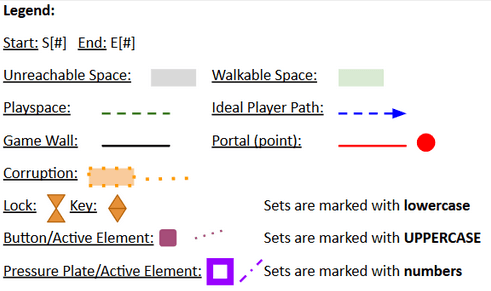
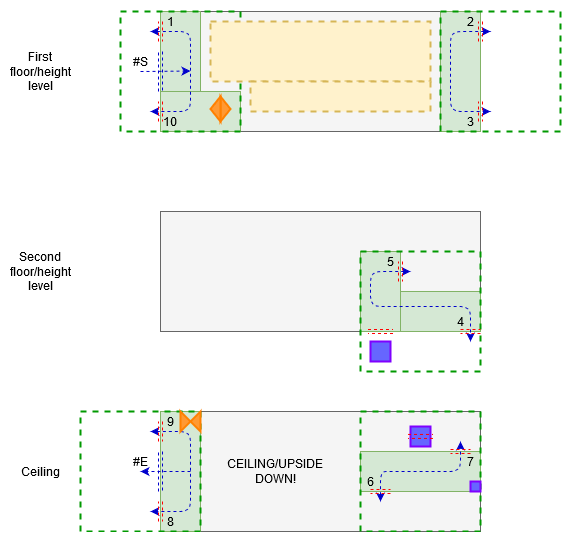
Researching Moorish Architecture
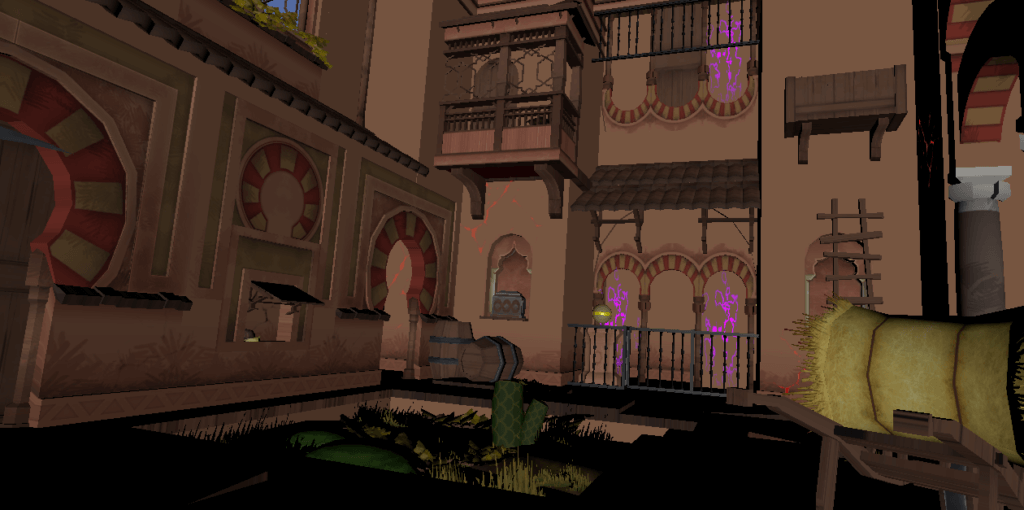
I used historical accurate references of Moorish architecture to find balance between game play and believability.
On the left you can see what the Vertical Slice Level looked like after some polishing.



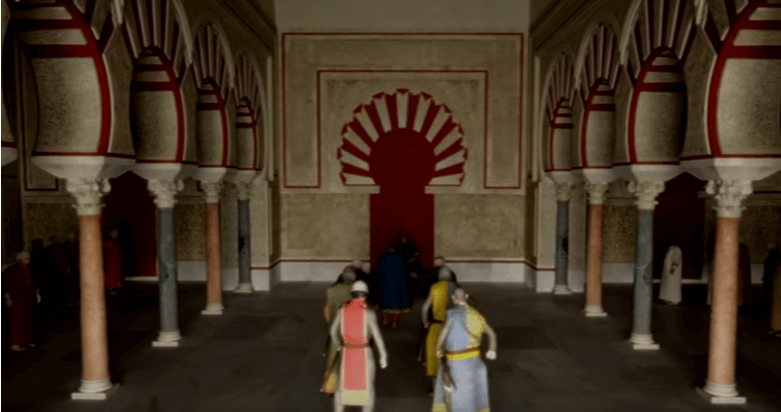
The game was succesfully released on time on Steam despite the Covid-19 pandemic and was positively reviewed.
https://store.steampowered.com/app/1248270/Spellbound_Spire/